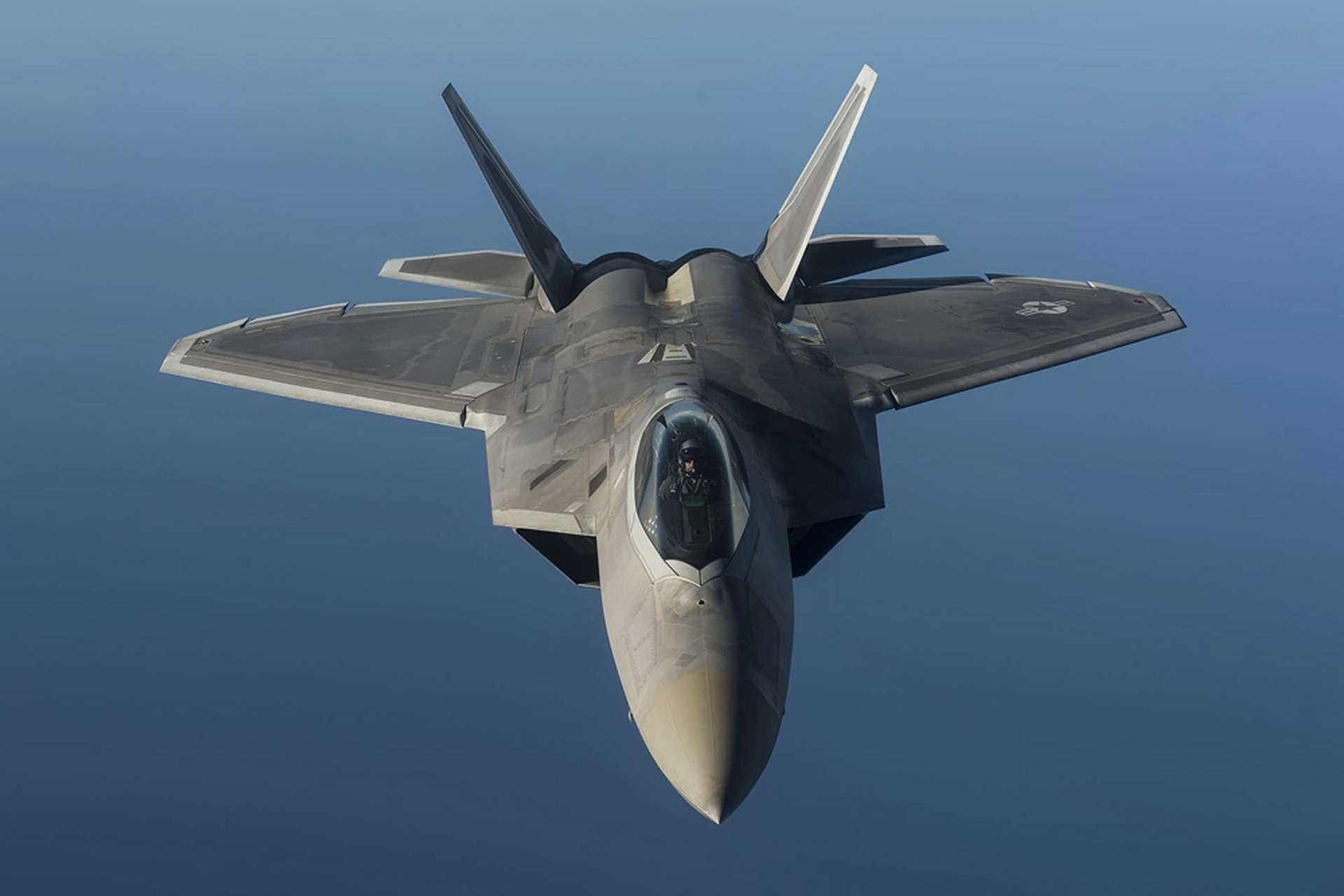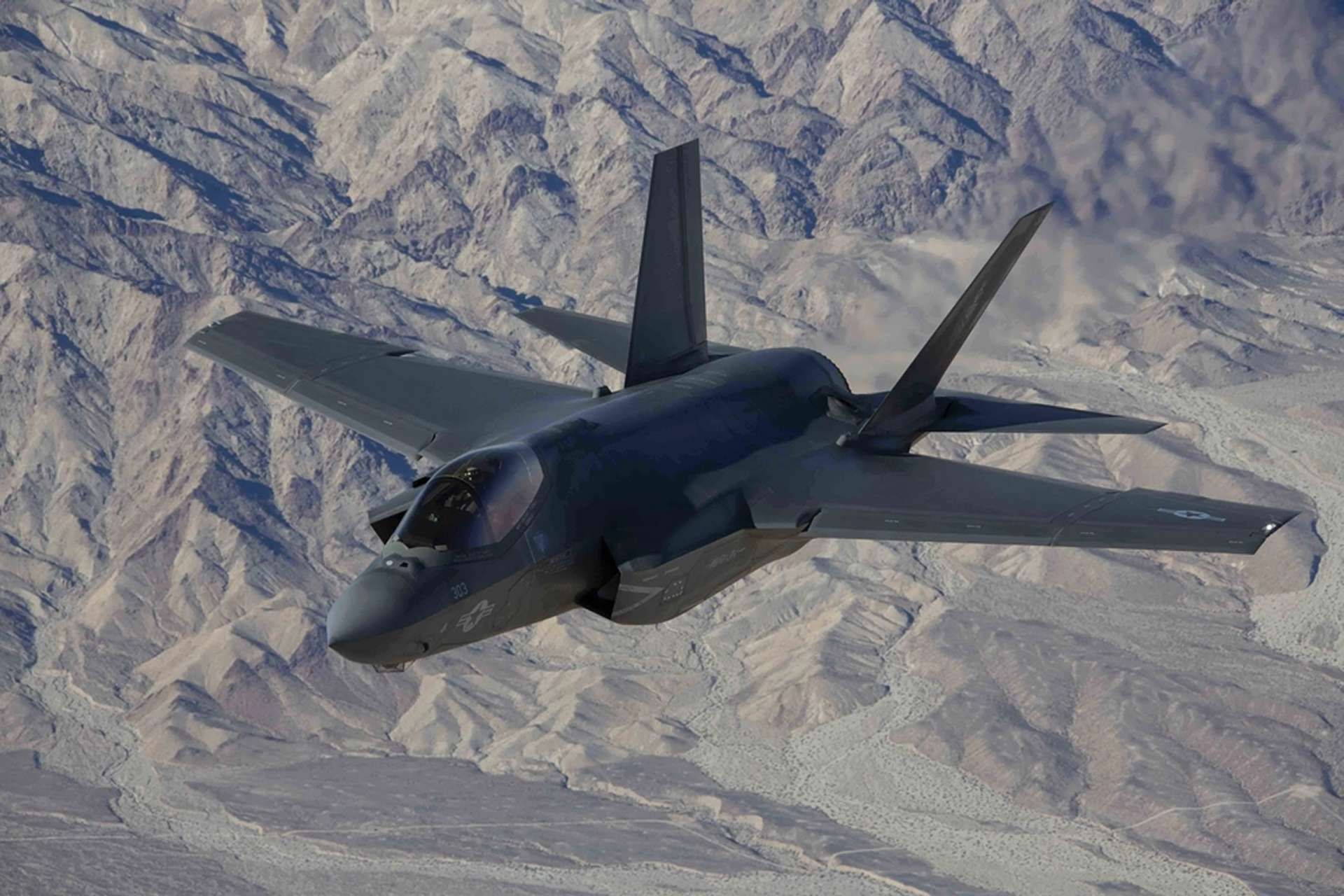Breaking News
United States Increases Its Presence in Middle East with Deployment of F-22A Raptors and F-35Cs.
The head of the Pentagon, Lloyd Austin, announced a reinforcement of the American military presence in the Middle East to support the defense of Israel and be prepared for any eventuality. The aircraft carrier USS Abraham Lincoln will replace the USS Theodore Roosevelt, bringing with it F-35Cs from the Marine Fighter Attack Squadron (VMFA) 314. In addition, several F-22s will be deployed.
Follow Army Recognition on Google News at this link

F-22 Raptor fifth-generation stealth fighter aircraft. (Picture source: US DoD)
In the face of the threat of military escalation, several Western countries have asked their nationals to leave the region, while the United Nations Interim Force in Lebanon (UNIFIL) has called for de-escalation. Additionally, Austin has ordered the deployment of additional cruisers and destroyers to defend against ballistic missiles. The USS Wasp, currently in the Mediterranean with the USS New York and the USS Oak Hill, could be mobilized for a possible civilian evacuation operation.
The US Air Force will also strengthen its presence with F-22A Raptors, in addition to the already deployed F-15E Strike Eagles, F-16s, and A-10 Thunderbolts. Entering service in 2005, the F-22A Raptor is a fifth-generation stealth aircraft capable of simultaneously taking down multiple targets without being detected by radar.
"If Israel is attacked, we will certainly help them, as we did in April," Austin declared. "We will work hard to reduce tensions and solve problems through diplomatic means," he added, noting that diplomacy without weapons is like music without instruments, hence this American military reinforcement.
The F-22A Raptor, built by Lockheed Martin, is a fifth-generation fighter aircraft currently in service. Its development began with the first flight of the YF-22 prototype on September 29, 1990, and it was officially commissioned on December 15, 2005, after a total investment of 51 billion euros. With a unit cost of $360 million, including $150 million for acquisition, 195 units were built, including 8 prototypes.
The F-22A is powered by two Pratt & Whitney F119-PW-100 turbofan engines, equipped with afterburners and thrust vectoring nozzles, each providing 156 kN of thrust in afterburner. The aircraft measures 18.90 meters in length, 13.56 meters in wingspan, and 5.05 meters in height, with a wing area of 78.4 m². Its empty weight is 19,700 kg, reaching 25,100 kg with armament and a maximum weight of 35,300 kg.
In terms of performance, the F-22A can reach a maximum speed of 2,410 km/h (Mach 2.25) and an altitude of 19,812 meters. Its rate of climb is impressive, reaching 15,240 meters per minute. It has a range of 1,100 km and a wing loading of 375 kg/m², with a thrust-to-weight ratio of 1.09.
The F-22A is also well-armed. It has an internal rotating cannon with six M61A2 20 mm barrels and three weapon bays that can hold six AIM-120 AMRAAM air-to-air missiles and two AIM-9 Sidewinders, or alternatively, two Sidewinders and two 454 kg JDAM bombs (or eight 113 kg bombs). It can also carry up to nine tons of weapons or fuel on four external pylons under the wings, accommodating eight missiles or four fuel tanks.
The avionics of the F-22A are equally advanced, with an AN/APG-77 radar and a head-up display, enhancing its air superiority capabilities. These characteristics make the F-22A Raptor a highly effective and versatile fighter aircraft, capable of dominating the aerial battlefield.

F-35C CV Lightning II Multirole fighter aircraft. (Picture source: US DoD)
The F-35C Lightning II, also built by Lockheed Martin, is a multi-role aircraft currently in service with the US Navy. This model is part of the Joint Strike Fighter (JSF) program and made its first flight on June 11, 2008, with its official entry into service in 2019. The development of the F-35 required a colossal investment of $406.5 billion in 2016, with a total expected cost exceeding $1 trillion. In 2018, the unit cost of an F-35, including development costs, was $143.84 million, with variations for different models: the F-35C then cost $299 million.
The F-35C is powered by a Pratt & Whitney F135 turbofan engine with afterburner, providing 178 kN of thrust. Measuring 15.85 meters in length, with a wingspan of 13.10 meters and a height of 5.28 meters, it has a wing area of 57.6 m². Its empty weight is 14,550 kg, and it can reach a maximum weight of 25,600 kg with armament.
The F-35C can fly at a maximum speed of 1,700 km/h (Mach 1.6+) and reach an altitude of 18,500 meters. Its range is 1,138 km, with an autonomy exceeding 2,800 km. The thrust-to-weight ratio is greater than 1, giving it great agility, and it can withstand a load factor of +7 G.
In terms of armament, the F-35C is equipped with a GAU-22 25 mm cannon with 180 rounds, housed in an external ventral pod for the B model. It has two internal weapon bays that can carry up to 2,800 kg of weapons, as well as six external pylons allowing it to carry up to 6,800 kg more. The advanced avionics include an AN/APG-81 radar and an AN/AAQ-37 IR sensor, enhancing its detection and combat capabilities.
With a single-pilot crew, the F-35C is designed to perform various missions, ranging from air superiority to ground attack, including reconnaissance and support operations. Its integration into the US Navy fleet marks a significant advancement in the aerial combat capabilities of the American forces.
Tensions are rising in the Middle East, and this strategic region will need to be closely monitored in the coming days as several sources mention a possible Iranian retaliation that could occur very soon. This is a developing story.

The A-10 Thunderbolt is one of the aircraft already deployed by the US air force in the Middle East. (Picture source: US DoD)


























